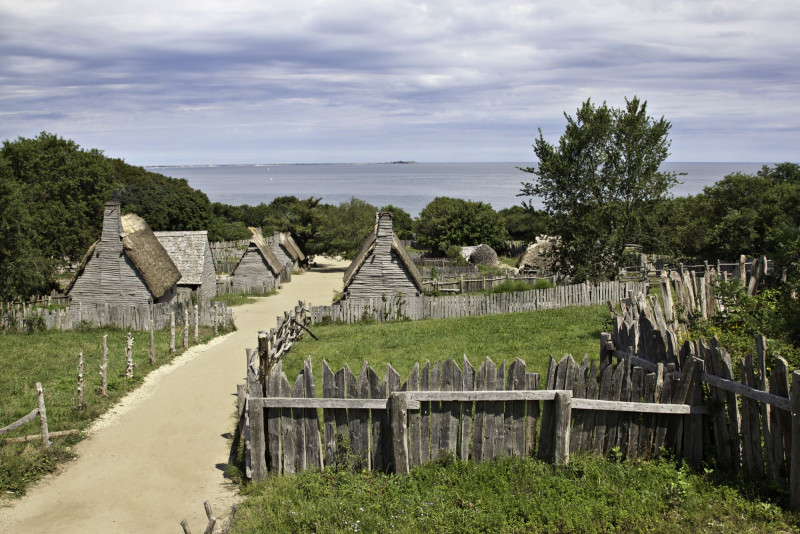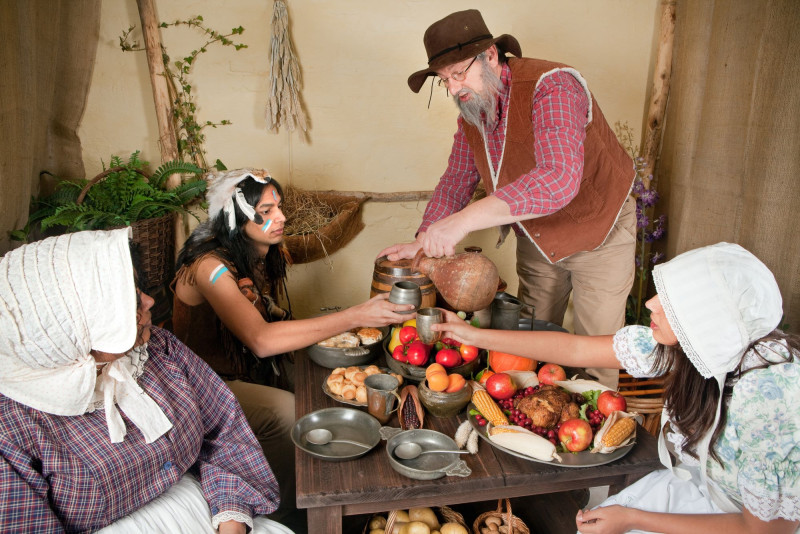What really happened at the first Thanksgiving in 1621 has nothing to do with today
With turkeys and family dinners, trips to the “fatherland”, parades and balloons, Americans celebrate Thanksgiving today, in memory of the first 100 or so settlers – pilgrims who arrived from England’s Mayflower in Massachusetts and founded Plymouth, culminating in the famous parade of Macy’s in New York.
“Thanksgiving” has been celebrated in the US for centuries, but in recent decades it has acquired the “happy”, consumerist character we know through Hollywood movies.
“Thanksgiving” is considered the beginning of the Christmas and New Year’s holiday season, so the Macy’s parade is closed every year by Santa’s float.
But what exactly happened on the first “Thanksgiving Day” in 1621? The real story is much “darker”, with a few struggling families of Europeans arriving in an unknown land, facing the natives already oppressed and decimated by the European conquerors and trying to survive in the swamps of the New World.
After surviving an entire winter and having a successful growing season, the Mayflower Pilgrims held a harvest festival – but it had nothing to do with today’s image of the festive Thanksgiving table, with its turkey and warm family atmosphere.
Still, what children are taught in American schools, that the Pilgrims were lucky to meet “friendly” Indians, is far from the historical truth, according to researchers.
“The parts of the story that are missing are pretty dark and don’t refer to family celebrations,” David J. Silverman, a historian specializing in early American and Native American history at George Washington University in Washington.
Originally, the Plymouth settlers, known as the Pilgrims, settled on abandoned land when all the Patuxet Indians died in a disease outbreaks (probably plague)
In fact, the natives Wampanoag of the region were not friendly and hospitable to the newly arrived foreigners in their land. But they were willing to form one military alliance with them because they were decimated from disease transmitted to them by an earlier European expedition, which made them vulnerable to hostile tribes such as the Narragansett people.
By the time of the Mayflower Pilgrims, the Wampanoag had been in contact with European settlers for more than a century, with fighting, violence, and kidnappings on both sides, yet they chose to ally with them because of, among other things, the military their technology: metal weapons and ammunition.
But the English also benefited greatly from the alliance. The Wampanoag protected them from other native tribes and taught them how to fish, plant crops, and gather shellfish.
Party yes, guests no
In the fall of 1621, the Pilgrims decided to celebrate their first harvest, but the Wampanoag were not initially invited as friends.
Only 50 of the 100 who had survived the harsh winter took part in the feast. The feast food was cooked by the four women who survived their first winter in the New World, along with their daughters and maids
The colonists’ celebration included firing shots into the air, which the natives interpreted as a call for help and rushed to the colony with 90 warriors.
There they discovered the English were partying and there was no real threat — so the native fighters joined them, according to Silverman.
What did the table of the first feast consist of?
Originally, according to historians, the “Thanksgiving Table” was probably non-existent – settlers and natives would have enjoyed their meal sitting on the floor and possibly eating with their hands, as there would have been no glass or silverware and very few tables and chairs
“They ate corn, fish, deer and local fowl, perhaps wild turkey, and the natives may have brought meat from game,” according to Kathleen DuVal, a historian who specializes in early American history at the University of North Carolina at Chapel Hill.
Also, most of the Thanksgiving foods that Americans enjoy today, such as the famous pudding, did not even exist at that time.
For example, neither the English nor the Wampanoag, who came to the US in 1719, had butter, flour, sugar, or potatoes. Instead, they probably enjoyed fish, shellfish, eels, wild berries, and some greens from the settlers’ gardens.
Source :Skai
With a wealth of experience honed over 4+ years in journalism, I bring a seasoned voice to the world of news. Currently, I work as a freelance writer and editor, always seeking new opportunities to tell compelling stories in the field of world news.












